The Economics and Statistics Division maintains archives of previous publications for accountability purposes, but makes no updates to keep these documents current with the latest data revisions from Statistics Canada. As a result, information in older documents may not be accurate. Please exercise caution when referring to older documents. For the latest information and historical data, please contact the individual listed to the right.
<--- Return to Archive
For additional information relating to this article, please contact:
March 05, 2024ENVIRONMENTAL AND CLEAN TECHNOLOGICAL PRODUCT ACCOUNT, 2022 The Environmental and Clean Technology (ECT) Products Economic Account measures the contribution to the Canadian economy of goods and services that reduce environmental impacts. Two broad categories of goods and services are recognized: environmental goods and services (including clean electricity, biofuels and primary goods, and waste management and remediation services), and clean technology goods and services (including manufactured goods, scientific and research and development services, construction services, and support services).
In Nova Scotia the gross value added generated by the ECT products sector grew 7.5% to $859 million in 2022. This amounted to $838 per capita or 1.6% of gross domestic product (at market prices). Nationally, gross value added from ECT products grew by 9.2% in 2022 with the fastest gains in New Brunswick, Manitoba and Saskatchewan. Newfoundland and Labrador reported the only decline in gross value added from ECT products.
Nova Scotia's gross value added per capita from ECT products was the lowest among provinces (Manitoba was the highest). Nova Scotia's gross value added from ECT products as a share of GDP was third lowest among provinces; Alberta and Saskatchewan were lowest while Manitoba was the highest.
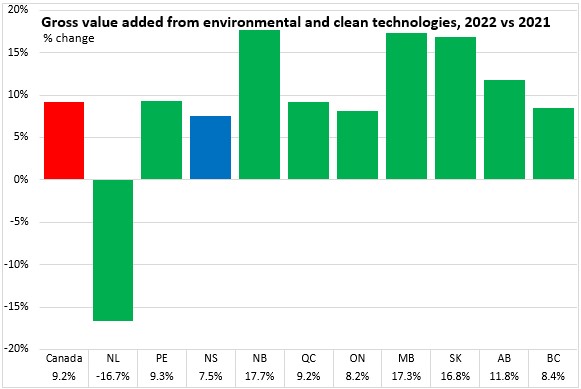
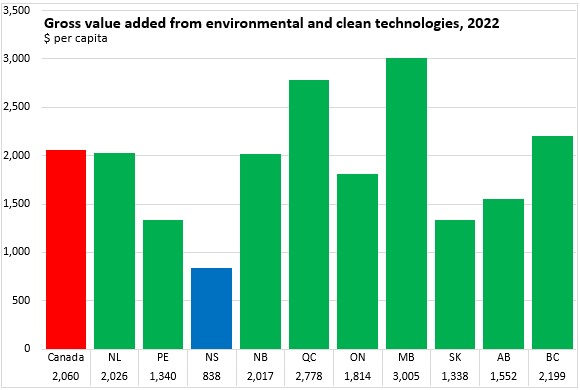
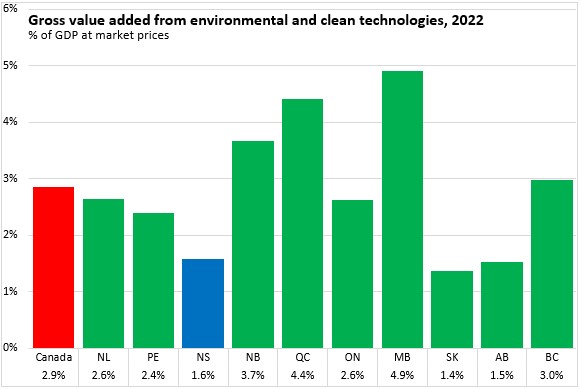
Nova Scotia's employment in ECT industries was 5,337 in 2022 or 1.1% of total employment. Nova Scotia, Saskatchewan and Alberta reported the lowest employment shares in ECT while Newfoundland and Labrador reported the highest employment share.
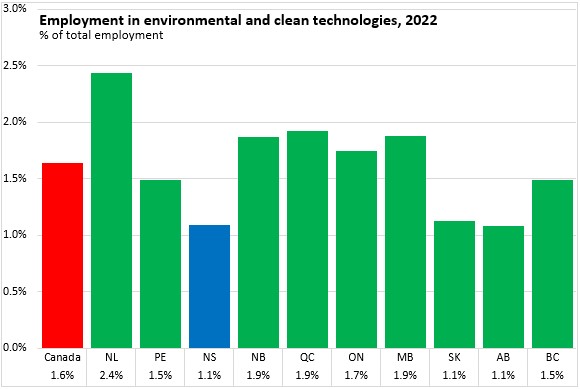
Employment in Nova Scotia's ECT industries grew by 2.4% in 2022 - outpacing the national growth of 1.3%. Prince Edward Island reported the fastest growth in ECT industries while Newfoundland and Labrador reported the steepest decline.
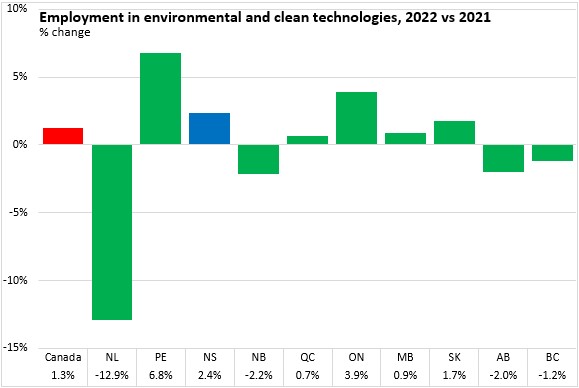
Trends
Nova Scotia's gross value added from ECT industries expanded for the consecutive years in 2021 and 2022. This is the first time there has been consecutive years of growth since 2014 and 2015. Construction, renewable electricity and waste management/remediation were the largest contributors to Nova Scotia's gross value added in ECT products.
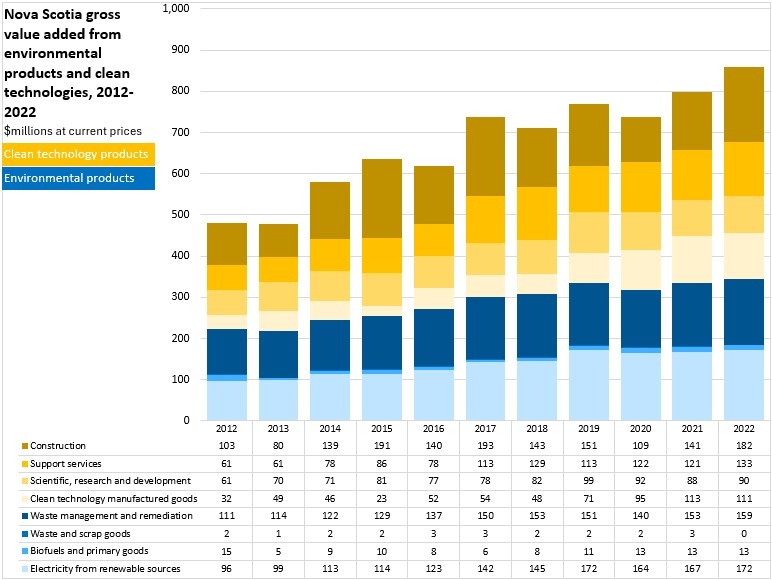
Nova Scotia's employment in ECT industries peaked in 2018 before declining in each of the next three years. The rise in employment in 2022 was the first increase since 2018.
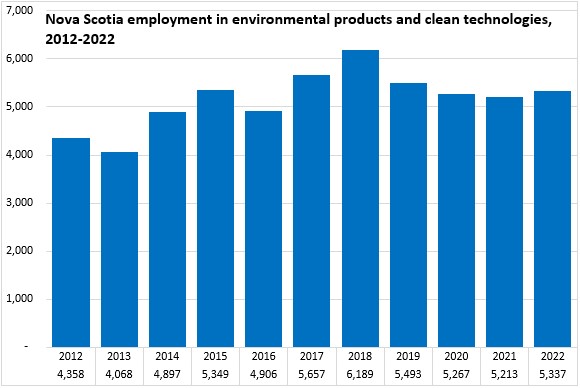
In each of the last 5 years, Nova Scotia has exported more ECT products than it has imported. There was an unusual spike in ECT exports in 2013 ($715 million), categorized primarily in complex clean technology manufactured goods ($649 million).
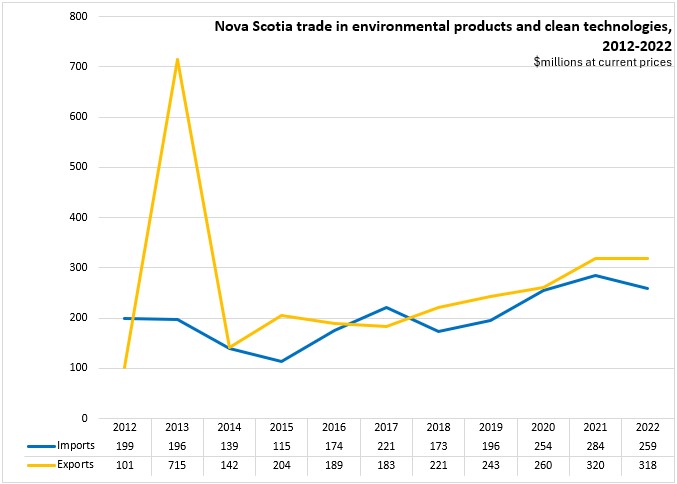
Source: Statistics Canada. Table: 36-10-0627-01 Environmental and Clean Technology Products Economic Account, production account (x 1,000,000); Table: 36-10-0632-01Environmental and Clean Technology Products Economic Account, employment; Table 36-10-0646-01 Environmental and Clean Technology Products Economic Account, international imports and exports per trading partner (x 1,000,000); Table 17-10-0009-01 Population estimates, quarterly; Table 36-10-0222-01 Gross domestic product, expenditure-based, provincial and territorial, annual (x 1,000,000); Table 36-10-0489-01 Labour statistics consistent with the System of National Accounts (SNA), by job category and industry
<--- Return to Archive